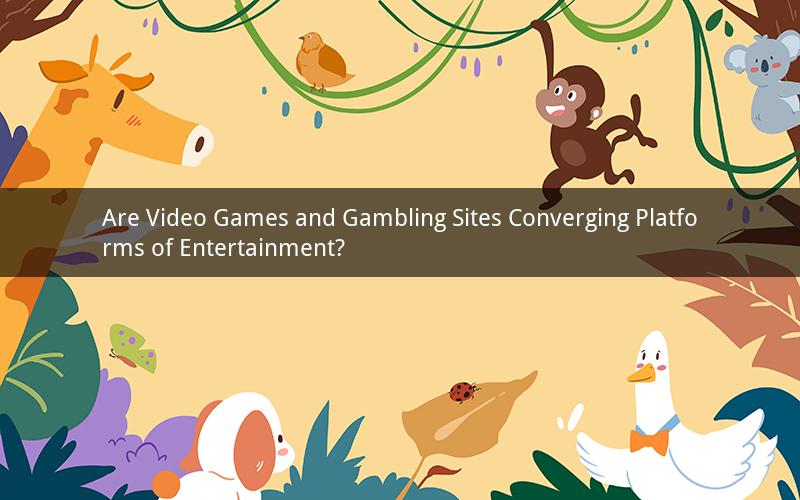
Table of Contents
1. Introduction to Video Games and Gambling
2. The Evolution of Video Games
3. The Rise of Online Gambling
4. The Intersection of Video Games and Gambling
- In-Game Gambling Mechanisms
- Cross-Platform Integrations
- The Ethical Dilemma
5. Real-World Scenarios: A Closer Look
- Gamified Advertisements
- Esports and Betting
- The Impact on Younger Generations
6. Case Studies: Successful Convergences
7. The Role of Technology
8. Challenges and Solutions
9. Conclusion
---
1. Introduction to Video Games and Gambling
Have you ever wondered if there's a common thread weaving through the experiences of millions who indulge in video games and those who place bets on online gambling sites? Both realms have evolved dramatically over the years, each attracting a vast audience with its unique set of attractions. But is there a point where these two worlds intersect, merging to create a new platform of entertainment?
2. The Evolution of Video Games
From the pixelated landscapes of Pong to the immersive universes of today's VR experiences, video games have come a long way. They started as simple diversions but have now become a cultural phenomenon, influencing art, music, and even our daily lives. The evolution of graphics, storytelling, and gameplay mechanics has been nothing short of spectacular.
3. The Rise of Online Gambling
Similarly, the world of online gambling has seen a meteoric rise, transitioning from clandestine activities to a legally regulated industry. With advancements in technology, bettors can now access a wide array of games from the comfort of their homes, with the added convenience of mobile devices.
4. The Intersection of Video Games and Gambling
In-Game Gambling Mechanisms
The first notable convergence between video games and gambling came with the introduction of in-game purchases that mimic gambling. Many popular games now offer virtual currencies, skins, or in-game items that can be bought or sold for real money, blurring the lines between gaming and gambling.
Cross-Platform Integrations
These cross-platform integrations have led to a new breed of gaming experiences. Imagine a scenario where you can earn real money by completing challenges in a video game, which can then be transferred to an online gambling site for a shot at winning big.
The Ethical Dilemma
This convergence raises significant ethical questions. Are developers exploiting the addictive nature of gambling to make more money? Should parents be concerned about their children's exposure to these gambling-like features in games?
5. Real-World Scenarios: A Closer Look
Gamified Advertisements
One real-world scenario is the use of gamified advertisements. Companies are now using elements of gambling to engage customers, such as sweepstakes or lucky draws, which can be quite compelling.
Esports and Betting
Esports, a billion-dollar industry, has also become intertwined with gambling. Fans can bet on their favorite teams or players, adding an extra layer of excitement to the viewing experience.
The Impact on Younger Generations
The impact on younger generations is a topic of concern. With easy access to both video games and gambling sites, there's a risk that young people might become addicted to both activities, leading to financial and psychological issues.
6. Case Studies: Successful Convergences
Take, for instance, the success of the "Fortnite" battle royale game. Its in-game purchases and partnerships with online gambling sites have not only made it a financial success but have also set a precedent for other game developers.
7. The Role of Technology
Technology plays a crucial role in the convergence of video games and gambling. Blockchain technology, for example, can ensure transparency and security in in-game transactions, making the experience more reliable.
8. Challenges and Solutions
Despite the potential benefits, there are significant challenges to overcome. Regulations need to be updated to keep pace with the rapidly evolving landscape. Moreover, developers and gambling sites must prioritize ethical considerations and user safety.
9. Conclusion
The convergence of video games and gambling sites represents a new era of entertainment. While it offers exciting possibilities, it also poses challenges that need to be addressed. The key is to strike a balance between innovation and responsibility.
---
Interactive Questions and Answers
Question 1: How do in-game purchases in video games differ from traditional gambling?
Answer: In-game purchases in video games typically involve buying virtual items or services within the game itself, while traditional gambling involves betting real money on an outcome with a chance of winning. The key difference lies in the monetary value and the intent behind the activity.
Question 2: Can video games actually help in reducing gambling addiction?
Answer: While video games themselves are not a cure for gambling addiction, they can be used as a form of therapy to help individuals manage their impulses. Interactive gaming can provide a controlled and structured environment for individuals to practice self-control.
Question 3: What role does the government play in regulating the convergence of video games and gambling?
Answer: Governments can regulate this convergence by establishing laws and regulations that ensure fair play, protect consumers, and prevent minors from accessing gambling sites. This includes age verification and the implementation of deposit limits.
Question 4: How can parents protect their children from the risks associated with in-game gambling?
Answer: Parents can take several steps to protect their children, such as monitoring their gaming habits, using parental controls to restrict access to gambling sites, and having open conversations about the potential risks.
Question 5: What are the long-term effects of gambling-like features in video games on mental health?
Answer: The long-term effects of gambling-like features in video games on mental health are still being studied. However, there is evidence to suggest that these features can contribute to problem gambling and other mental health issues, especially in vulnerable populations.